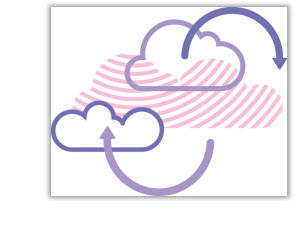 Mark Eldred, director & general manager, strategy, marketing & offer development, Large Enterprise Organisation, Xerox, Europe
Mark Eldred, director & general manager, strategy, marketing & offer development, Large Enterprise Organisation, Xerox, Europe
Workplace technology is constantly changing and the world of enterprise IT, and the strategies that drive it, are evolving. For example, businesses are recognising the ways in which workers can use the increased flexibility that mobile technology brings, enabling them to work from any place, anytime, anywhere.
But what does the digital world and constant change it represents actually mean for leadership roles? According to research, the development of big data, cloud computing and enterprise mobility will “require an entirely different set of IT skills and roles” as IT becomes a key force in business organisations. So how can CIOs effect innovative change while carrying out their everyday roles?
The relationship between IT and the rest of the organisation, as well as with customers, is taking centre stage as digital leaders need to show that they can provide an information technology strategy (and team) that can deliver today and tomorrow. They need to understand the business as a whole and help to build a shared vision with peers in other functions that encompasses big data analytics, cloud and mobility; ensuring they stay relevant as a business in the age of the customer.
- Big data analytics involves more than just gathering and managing data. Improvements in technology mean that we have access to, and can decipher, more data than ever. “More data means more insight, which in turn means more knowledge and power” which in turn help inform major business decisions. This is important for all enterprise but even more so for large enterprise that need accurate, up-to-date information in order to enhance their business processes.
- Cloud computing can work seamlessly with existing infrastructure. It offers flexibility for any size of company whose employees need to be able to access information and files from outside the office, at any time, enabling them to work together without needing to be in the same building, whether it’s from home, on the way to a meeting or from a smartphone, with unlimited storage space. No extra equipment is needed and upgrades can be applied quickly.
- Mobile: As more workers move away from the traditional desktop computer towards mobile devices such as a smartphone or tablet, the way in which they do this needs to be streamlined. They need secure, user-friendly apps and cloud-based solutions. From basics like WiFi, to using secure file-sharing and being able to access a password-protected printer from outside the office, new technology devices need to be integrated into existing business procedures with the minimum amount of disruption.
Businesses that look at using these technologies to work smarter, improve productivity, connect with customers faster and use data to grow will be the businesses that stay ahead.
The impact of these trends and what it means for business is the focus of this year’s Gartner Symposium ITxpo 2014, which Xerox is attending. This event gives CIOs and IT executives the chance to learn how to develop their IT leadership through analyst sessions and workshops, enabling them to adapt new strategies and look to the workplace of the future.
If you’re attending Gartner Symposium, please do drop by our stand (O2) to hear more about these trends and what new workplace technologies are helping transform the enterprise. We look forward to seeing you there.


